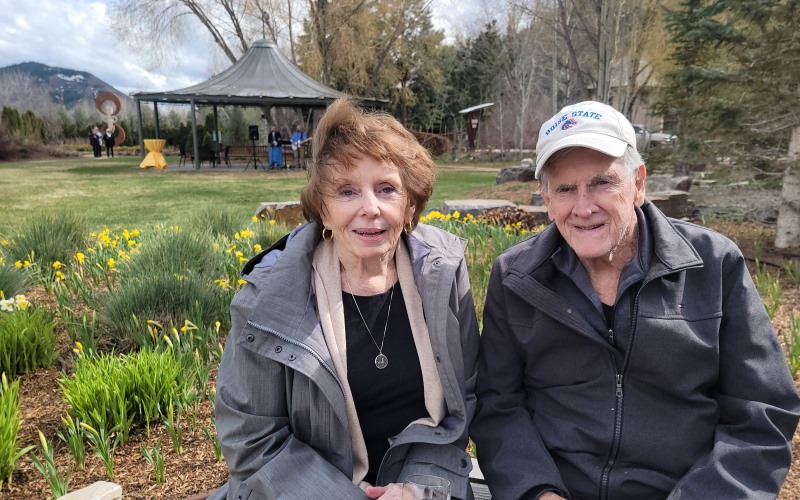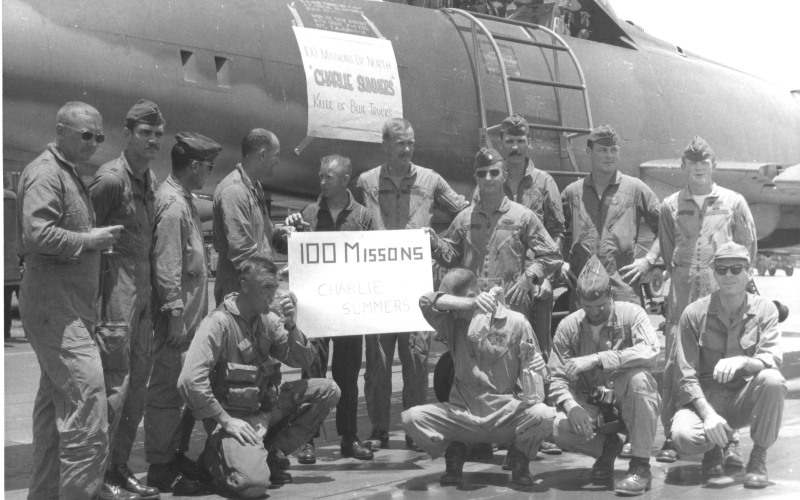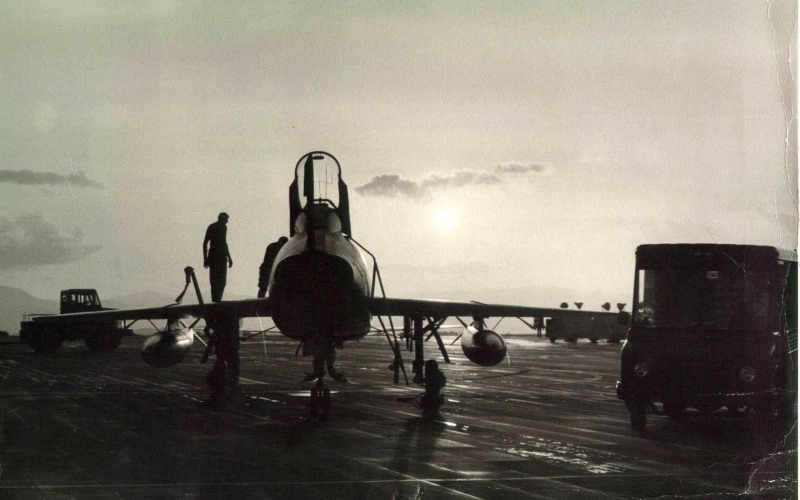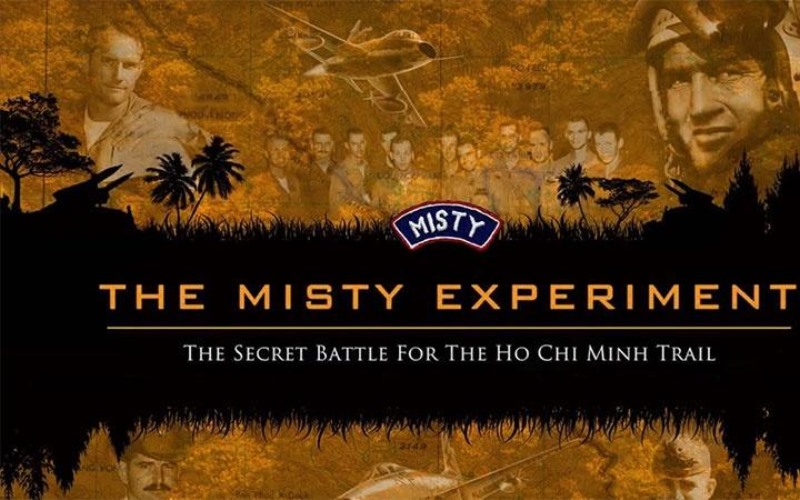|
BY KAREN BOSSICK At the height of the Vietnam War, it became apparent that the United States’ slow-moving piston-and-propeller-driven planes could not evade the formidable Soviet-built anti-aircraft artillery and surface-to-air missiles (SAMs) that the North Vietnamese Army was beginning to deploy. U.S. casualties increased and enemy supply trucks bringing weaponry and troops down the Ho Chi Minh Trail were going unobserved. The United States needed daring airmen to test a new radical approach to identify enemy movements and to search for and rescue pilots that had been shot down by enemy fire. Brian Williams of Hailey was one of those who stepped up to take part in what’s become known as “The Misty Experiment.”
|
|

“Brian sometimes downplays what the group did, but it was an extremely dangerous mission,” said his wife Pat Williams. PHOTO: Karen Bossick
|
|
|
“It was a very risky mission,” he said of flying the light Super Sabre F-100 fighters 550 miles per hour through enemy territory. “We’d find targets and call in aircraft to bomb them. The premise was to keep a fast airspeed as you used your eyes to observe what was going on below. I never slowed down. I was constantly jerking the airplane around, changing the flight plan constantly.” The story of Brian Williams and others who took part in this little-known chapter of the Vietnam War will be told at 9 tonight--Monday, May 30--when Idaho PBS airs “The Misty Experiment: The Secret Battle for the Ho Chi Minh Trail.” The hour-long documentary, which was 14 years in the making, is “a testament to an amazing group of brave men who jumped at the chance to change the course of a devastating war,” said executive producer and Misty veteran Dean Echenberg. Misty pilot Don Shepperd, who later became Major General and head of the Air National Guard, called theirs “an impossible mission.”
|
|

The top-secret mission was called Operation Commando Sabre during the war. COURTESY: PBS
|
|
|
When the nation wasn’t willing to bomb resupply operations at Vietnam’s harbors, it shifted its attention to a web of trails and waterways known as the Ho Chi Minh Trail, he added. “We were the ones who had to pick off the enemy, truck by truck.” The Misty pilots became known by their radio call sign “Misty.” And they developed “Misty eyes”--the ability to spot dust accumulations on tree leaves and splash patterns on creek beds that indicated enemy movement and too-perfect canopies that suggested man-made camouflage. They subjected their bodies to extreme physical stress from G-forces during quick evasive maneuvers known as jinking while dialing up their brains to remember enemy locations. Then they’d debrief for hours so intelligence officials could create detailed maps with the information they recounted. Williams, who grew up in Seattle, went through ROTC at the University of Washington where he qualified for flight school. He flew planes in England for three years, then volunteered to go to Vietnam as the war heated up.
|
|

Pilots constantly yanked the plane around at speeds of 350 to 550 miles per hour to avoid being hit. COURTESY: PBS
|
|
|
He arrived in Vietnam in July 1967, one month after the Misty detachment was activated, and began flying bombing missions in South Vietnam. He was quick to volunteer for the Misty Experiment when the surface-to-air missiles began showing up in North Vietnam and flew his first Misty mission on New Year’s Day 1968. “I said that sounds like an exciting mission,” said Williams, who was 30 and had 500 hours flying a plane by that time. “The Air Force had never done it before so they didn’t know if we could survive or not.” A New Year’s Day truce was in effect the day of Williams’ first mission above the demilitarized zone. “We got up to North Vietnam just to watch what was going on and it was bumper-to-bumper traffic up there. They hid during the day, then moved at nightfall.”
|
|

National Public Television created “The Misty Experiment” to commemorate the 50th anniversary of the Vietnam War.
|
|
|
In North Vietnam Williams looked for moving trucks and railcars, his eyeballs having to suffice in the days before laser technology, radar, computerized drones, satellites and precision-guided targeting. “We’d pass real low—a hundred feet off the ground—and we got to know where road blocks were like the back of our hand,” he recounted. “We’d mark the target, and we did have a cannon so if we saw a group of trucks on the road throughout the mountains we could strafe it. We could also fire rockets to mark the target. They could do damage, but they were mostly designed to put a white puffy cloud out.” Forty-two—or about a quarter--of the 157 Misty pilots were shot down. It was the war’s second highest loss rate. “We knew the guns were fast enough to catch up to us so we didn’t stay for a second run,” Williams recalled. “I flew 58 missions and I came back with holes in the plane. It was a so dangerous we were limited to four months, then we’d go back to regular bombing, which was like a cakewalk compared to our flights over North Vietnam.”
The experiment produced a Medal of Honor winner, two astronauts, two Air Force chiefs of staff, countless CEOs, and Rutan Yeager, who with his wife became the first the first man to fly non-stop un-refueled around the world Williams flew in the Misty program for a year. He eventually made a career out of the Air Force, spending many of his 26 years in the Air Force on assignment in Spain. He was stationed at Mountain Home twice, retiring in 1986 as base commander of the wing ““The single-engine plane I flew was a temperamental airplane that killed a lot of people,” he said. “It had strange stall characteristics so if you didn’t use the right controls at the right time the airplane could flip on you. I survived so I must’ve done all right. “Misty gave me immense confidence that I knew how to fly the airplane,” he added.
Williams was interviewed for the film during a Misty reunion where 20 of his colleagues recounted thrilling, frightening and heartbreaking stories of bravery. “It’s kind of cool,” he said. “There’s been a couple books about the Misty program but never a film. It preserves history—history of a new mission that we were the first to take on.”
|